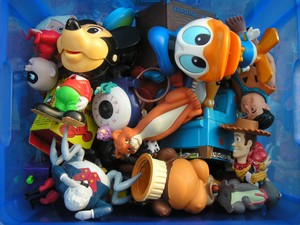This holiday season, millions of toys were unwrapped by children eager to play with them. Defects in the manufacturing, design, and warning labels in these toys, however, may cause injuries. This article is an introduction to product liability and an overview of the Consumer Product Safety Commission’s report on defective and dangerous children’s toys.
Product Liability: The Basics
Manufacturers and sellers of goods can be held liable to consumers for any physical harm or property damage caused by their products. These companies owe a duty to their consumers and injured consumers may hold them liable for the injuries their products caused. There are three types of defects at the center of product liability claims:
- Manufacturing Defects: A product has a manufacturing defect when it does not meet the manufacturer’s own design plan for the product. While the design for the product may not be defective, the product was incorrectly made, making it unreasonably dangerous.
- Design Defects: A product with a design defect may have been manufactured according to the producer’s plan but such the plan itself was faulty. Therefore, the risk of injury impacts all products produced using the same design.
- Warning Defects: A warning defect is a failure to warn the user of the potential dangers of using the product. Even if the manufacturer, or seller of goods, includes a warning label with the product, the warning label itself may be faulty.
Product liability actions concerning children’s toys have involved each type of defect listed above. Each of these defects has the potential to injure the user of the products.
Consumer Product Safety Commission
The United States Consumer Product Safety Commission (CPSC) is the agency responsible for making regulations for the sale and manufacture of consumer products on behalf of the federal government. This independent agency is tasked with protecting the public from injuries caused by products ranging from children’s toys to household chemicals.
Each year, the CPSC releases a report that describes toy-related injuries in the United States. In their most recent report, released November 2014, the CPSC estimated that there were over 250,000 toy-related injuries treated in emergency rooms during the previous year. Most of these injuries involved cuts, bruises, or scratches mainly to the head and face area. In addition, about 69% of the children injured were twelve years-old or younger.
The toys associated with the largest number of injuries treated in emergency rooms, according to the CPSC, were non-motorized scooters. These toys, along with other “riding toys” made up the largest number of incidents during the year. The next category with a large percentage of toy-related injuries were “toy balls”. Finally, “toy vehicles” also caused a significant number of injuries to children.
Product Recalls
The manufacturers and sellers of these dangerous and/or defective toys may be held liable for these injuries. These producers may recognize the defects in their products by issuing a product recall. Product recalls allow consumers to return toys with known defects back to the manufacturers. In issuing a product recall, the manufacturer may reduce the extent of its liability in making the faulty product.
In addition to publishing an annual report on children’s toys, the CPSC constantly updates its website with toys containing known defects. These include toys that have been recalled by the manufacturer. Toys sold during this past holiday season that have since been recalled include products manufactured and sold by: Tyco, Graco and Toys R Us. More information regarding product recalls can be accessed by the CPSC website: www.cpsc.gov.
Source: https://www.cpsc.gov/Global/Research-and-Statistics/Injury-Statistics/Toys/ToyReport2013.pdf
J.D. Candidate, Class of 2016
Temple University Beasley School of Law


